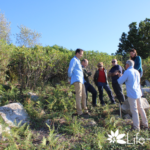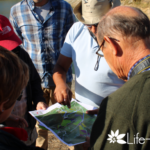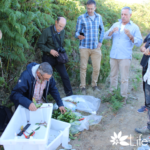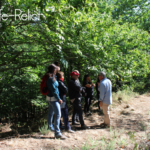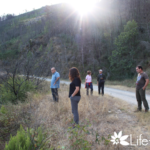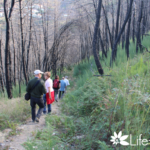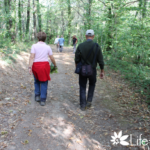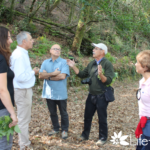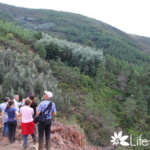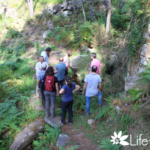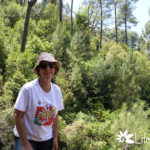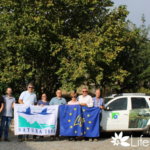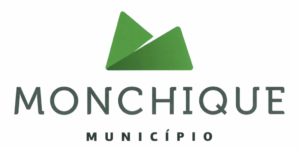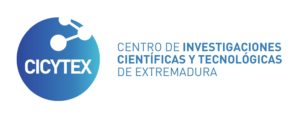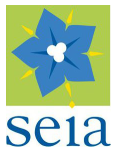On September 11th, the Life-Relict Scientific Committee met for the second time and, over the course of 3 days, visited all intervention areas of the project. The main objective of this visit is based on the relevance of scientific monitoring, not only directed to concrete conservation actions, but also to the pertinence of specialized advice for the implementation of field management measures aimed at the conservation of the Continental Laurissilva relicts at long term.
This Scientific Committee includes several national and international specialists, such as in botany, geobotany and climate change, as well as representatives of public territorial management entities: Carlos Pinto Gomes (Professor at the University of Évora, specialist in vegetation ecology and coordinator of the LIFE- Relict); Sara Del Río (Professor at the University of León, Spain, specialist on the impacts that climate change has on plant communities); Francisco Vazquéz Pardo (Biologist and coordinator of scientific research projects at the Center for Scientific and Technological Investigations of Extremadura); Eusébio Cano (Professor at Jaén University, Spain, specialist in Mediterranean flora and vegetation); Jean Jacques Lazare (PhD Professor at the Center d’Étude et de Conservation des Ressources Végétales and specialist in geobotany); Pedro Ivo (ICNF Technician responsible for Nature and Biodiversity, specialist in flora and focal point of LIFE projects in Portugal); Nuno Fidalgo (Technician in the Municipality of Monchique in the Office of Civil Protection and Forests); Cristina Garcia (Technician at Serra da Estrela Rural Development Association); Artur Costa (Operational Commander of Civil Protection in the Municipality of Seia) and Alexandre Silva (Superior Technician in the Municipality of Seia and specialist in flora of Serra da Estrela). The Scientific Committee visit to the project’s intervention areas and was also accompanied by the Life-Relict team.
The visit to the project areas allowed the Scientific Committee to observe, at various sites, the interventions already implemented in the field, thus creating an opportunity to debate precise ideas and clarify doubts as to how these and other planned interventions will favor the preservation of the Continental Laurissilva Relicts in the long term. It was also useful to clarify specific points of field interventions aimed at reducing significantly threats, such as selective vegetation control to reduce the risk of fire and the control of invasive alien species. As a result of this visit, it was possible to exchange knowledge and share experiences between the members of the Scientific Committee and the LIFE-Relict team, thus creating an important moment of mutual learning.
However, during this visit it was also possible to observe other singularities of the ecological richness existing in the various areas of intervention of this project, besides the relict species of the Continental Laurissilva. As an example, in Monchique we observed the monchique oak (Quercus canariensis), the samouco (Myrica faya) and some paper flowers exclusive to this mountain (Armeria beirana subsp. Monchiquensis). In the Mata da Margaraça we observed the oak tree (Quercus robur), holly (Ilex aquifolium), hazel tree (Corylus avellana), mountain elm (Ulmus glabra), as well as other plants unique to this place, such as of finch (Linaria triornithophora). In Serra da Estrela, in addition to the lush landscape, it was also possible to observe the harmonious relationship between man and nature.
Click on images to enlarge
Legenda:
1 – Visit in Monchique’ area where the actions to improve the conservation status of the effective areas of Pontic Rhododendron are being implemented
2 – Explanations of project intervention areas within the Serra de Monchique.
3 – In the shadow of a beautiful pontic rhododendron, the Scientific Committee receives information on the collection and propagation of vegetative material that will be used to increase the area of this habitat in the Serra de Monchique.
4 – Also in the Serra de Monchique, the area where habitat enhancement actions will be implemented was visited.
5 – The visit to the Mata da Margaraça began by observing the natural regeneration of the burned area in 2017.
6 – Observation of the natural regeneration of the burned area in 2017 in Mata da Margaraça.
7 – Visit the Portuguese Laurel area that is in the best state of conservation in the Mata da Margaraça.
8 – Opportunity to exchange knowledge and experience among specialists in Mata da Margaraça
9 – Near the village of Cabeça, in Serra da Estrela, there was an opportunity to learn more about the project’s intervention area.
10 – Visit to the traditional irrigation levada that was recovered with the objective of restoring the water supply to the existing Portuguese Laurel core.
11 – Professor Conceição Castro was our photographer.
12 – Group photograph with the Scientific Committee and the project team that work in Serra da Estrela.



